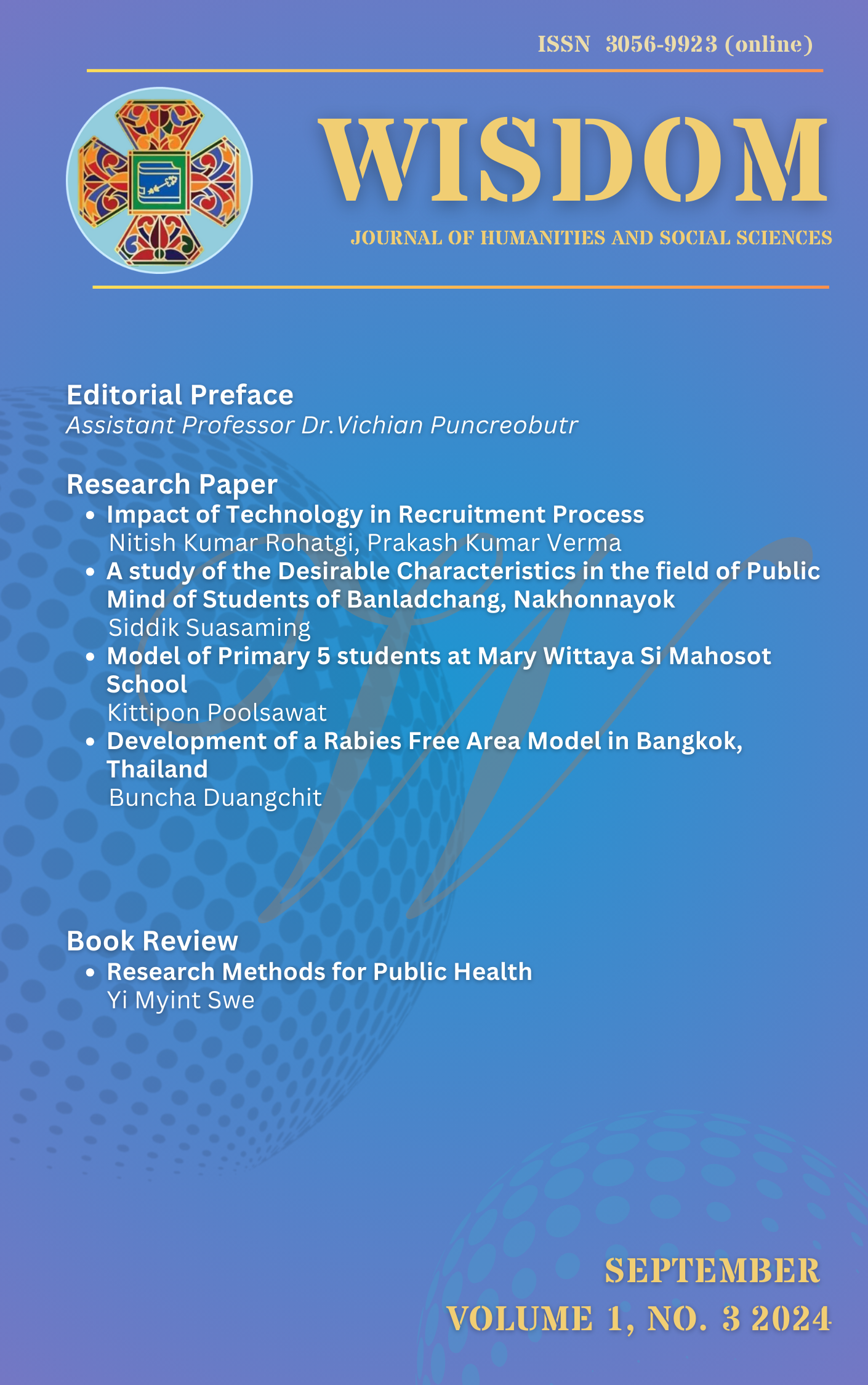The Impact Of Technology In Recruitment Process
Keywords:
Artificial Intelligence, Hiring Procedures, Integration, Transformation, Effectiveness, ImplicationsAbstract
The integration of technology in the recruitment process has significantly transformed how organizations identify, attract, and hire talent. From the automation of routine tasks to the use of artificial intelligence (AI) for candidate screening, technology has streamlined recruitment, making it more efficient and data-driven. Tools such as Applicant Tracking Systems (ATS) help recruiters manage large volumes of applications, while AI-powered algorithms provide more objective assessments of candidates' skills and fit. Additionally, social media platforms and job portals have expanded the reach of recruiters, enabling them to access a wider pool of candidates globally. Despite its advantages, the use of technology in recruitment also presents challenges. Over-reliance on AI may lead to bias, as algorithms can unintentionally perpetuate existing inequalities in hiring practices. Furthermore, the human element of recruitment may be diminished, potentially overlooking important soft skills and cultural fit. Ethical considerations surrounding data privacy and transparency also come into play as employers leverage data analytics for decision-making.
This abstract explores the dual impact of technology on recruitment, highlighting both its efficiency gains and the associated risks. As technology continues to evolve, companies must balance innovation with fairness and inclusivity in their hiring practices to ensure ethical and effective recruitment outcomes.
References
Allen, D. G., Van Scotter, J. R., & Otondo, R. F. (2004). Recruitment communication media: Impact on prehire outcomes. Personnel Psychology, 57, 143–171.
Allen, J. F. (1998). AI growing up: The changes and opportunities. AI magazine, 19(4), 13-13.
Barutçugil, İ. (2004). Stratejik İnsan Kaynakları Yönetimi, Kariyer Yayıncılık iletisim,Egitim
Hiz. Ltd. Şti., Kariyer Yayınları, 59.
Baş, T., & Akturan, U. (2008). Nitel araştırma yöntemleri: NVivo 7.0 ile nitel veri analizi.
Bhatnagar, S., Alexandrova, A., Avin, S., Cave, S., Cheke, L., Crosby, M., & Price, H. (2017). Mapping intelligence: Requirements and possibilities. In 3rd Conference on" Philosophy and Theory of Artificial Intelligence (pp. 117-135).
Brachman, R. J. (2006). AI more than the sum of its parts. AI Magazine, 27(4), 19-19.
Çetinkol, D. (2016). İnsan Kaynakları Yönetimi Seçme ve Yerleştirme Süreci ve bir örnek
olay. Gazi Üniversitesi, Bilişim Enstitüsü Yönetim Bilişim Sistemleri Yüksek Lisans Bitirme Projesi.
Dietterich, T. G. (2017). Steps toward robust artificial intelligence. AI Magazine, 38(3), 3-24.
Gür, Y. E., Ayden, C., & Yücel, (2019). A. Yapay Zekâ Alanındaki Gelişmelerin İnsan Kaynakları Yönetimine Etkisi. Fırat Üniversitesi Uluslararası İktisadi ve İdari Bilimler Dergisi, 3(2), 137-158.
Hacioglu, U. (Ed.). (2019). Handbook of research on strategic fit and design in business ecosystems. IGI Global. https://doi.org/0.4018/978-1-7998-1125-1
Hacioglu, U., & Sevgilioglu, G. (2019). The evolving role of automated systems and its cyber-security issue for global business operations in Industry 4.0. International Journal of Business Ecosystem & Strategy. 1(1), 01–11. https://doi.org
Johansson, J., & Herranen, S. (2019). The application of Artificial Intelligence (AI) in Human Resource Management: Current state of AI and its impact on the traditional recruitment process. Jönköping University, Bachelor Thesis, Jönköping
Mozumder, R. A., Laskar, A. I., & Hussain, M. (2018). Penetrability prediction of microfine cement grout in granular soil using Artificial Intelligence techniques. Tunnelling and Underground Space Technology, 72 (February) , 131-144.
Upadhyay, A. K., & Khandelwal, K. (2018). Applying artificial intelligence: implications for recruitment. Strategic HR Review
Vardarlier, P., & Zafer, C. (2020). Use of Artificial Intelligence as Business Strategy in Recruitment Process and Social Perspective. In Digital Business Strategies in Blockchain Ecosystems. (pp. 355-373).
Wang, P. (2019). On Defining Artificial Intelligence. On Defining Artificial Intelligence, 10(2), 1-37.
Winfield, A. (2020). Intelligence is not one thing. Journal of Artificial General Intelligence, 11(2), 97-100.





